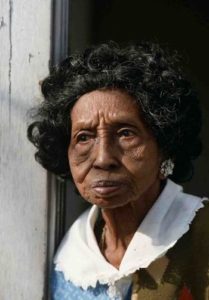
#Clementine hunter license#
This is a part of the Wikipedia article used under the Creative Commons Attribution-Sharealike 3.0 Unported License (CC-BY-SA). Hunter lived her entire life in rural, northwest Louisiana, never going more than 100 miles from home. Clementine Hunter was a self-taught African American artist known for her painted depictions of early 20th-century plantation life in Louisiana. She was back picking cotton a few days later. On the morning before giving birth to one of her children, she picked 78 pounds of cotton, went home and called for the midwife. Hunter bore seven children, two stillborn. Hunter worked as a field hand in her early years there and then as a cook and housekeeper beginning in the late 1920s. The two lived and worked at Melrose Plantation for many years. Later she married Emmanuel Hunter, a woodchopper at Melrose, in 1924. Her first two children, Joseph (Frenchie) and Cora, were fathered by Charlie Dupree, whom Hunter said she did not marry.

She spent much of her life picking cotton and attended school for only 10 days, never learning to read or write. It is now known as Little Eva's Plantation.Īt the age of 15, Hunter moved to Melrose Plantation south of Natchitoches. Hidden Hill was known as a harsh place to live and work, and local accounts say it was the inspiration for Uncle Tom's Cabin. Her paternal grandfather was "an old Irishman" and her grandmother, "a black Indian lady called 'MeMe'" (pronounced May–May). Her maternal grandparents were named Idole, who was formerly enslaved, and Billy Zack Adams. Her parents were married on October 15, 1890. Clementine Hunter (1887-1988) painted every day from the 1930s until several days before her death at age 101. 1905) and her father was Janvier (John) Reuben (d. Hunter's given name was originally Clemence, but she changed it after moving to Melrose Plantation. She was the eldest of seven children of Creole parents at Hidden Hill Plantation, near Cloutierville in Natchitoches Parish, Louisiana. Clementine Hunter (pronounced Clementeen late December 1886 or early January 1887 January 1, 1988) was a self-taught Black folk artist from the Cane River region of Louisiana, who lived and worked on Melrose Plantation.
.jpg)
In 2013, director Robert Wilson presented a new opera about her, entitled Zinnias: the Life of Clementine Hunter, at Montclair State University in New Jersey.īorn either in late December 1886 or early January 1887, two decades after the end of the American Civil War, Hunter's grandparents were enslaved.

Hunter was granted an honorary Doctor of Fine Arts degree by Northwestern State University of Louisiana in 1986. By the end of her life, her work was being exhibited in museums and sold by dealers for thousands of dollars. She sold her first paintings for as little as 25 cents. Hunter's artwork depicted plantation life in the early 20th century, documenting a bygone era. In her fifties, she began painting, using brushes and paints left by an artist who visited Melrose Plantation, where she then lived and worked. Hunter was born into a Louisiana Creole family at Hidden Hill Plantation, near Cloutierville, in Natchitoches Parish, Louisiana she started working as a farm laborer when young, never learning to read or write. Clementine Hunter became a household name in her home state of Louisiana for her bright, whimsical depictions of plantation life in the 20th century. She is the first African-American artist to have a solo exhibition at the present-day New Orleans Museum of Art. state of Louisiana, who lived and worked on Melrose Plantation.
.jpg)
Her auction record, however, currently stands at $70,150 for The Annunciation and the Adoration of the Wise Men, featuring black farm workers - the price paid in 2018 by the Museum of Fine Arts Boston.Clementine Hunter (pronounced Clementeen) (late December 1886 or early January 1887 – January 1, 1988) was a self-taught black folk artist from the Cane River region of the U.S. In January 2020 Christie’s sold Hunter’s 1981 painting Melrose Complex #2, below, for $21,250 - more than four times its low estimate. As she received more recognition, her signature became more stylised.’ ‘As she started to make a little money, she applied paint more generously and used more vibrant colours. ‘You can physically trace her evolution through her works,’ Zimmerman says. Her masterpiece, a nine-panel domestic cycle on the walls of the Melrose Plantation’s African House - a kind of Sistine Chapel of folk art - can be seen on Google Street View. Hunter produced some 5,000 works during the second half of her life, working at night beside a kerosene lamp in her four-roomed, tin-roofed tenant cabin, which is now listed on America’s register of Historic Artists’ Homes and Studios.


 0 kommentar(er)
0 kommentar(er)
